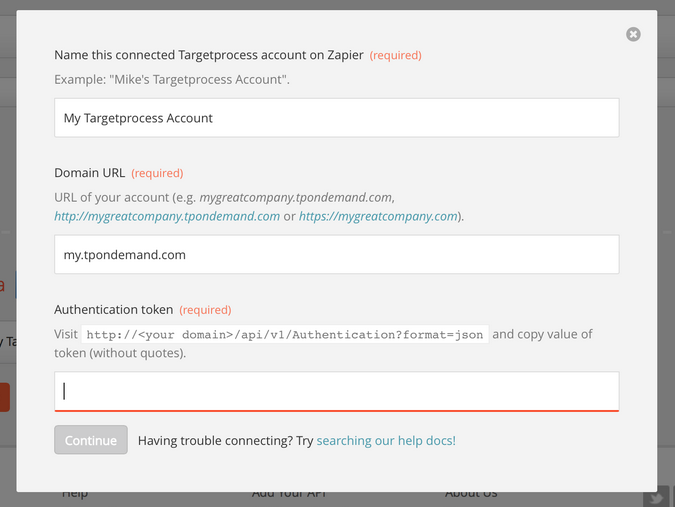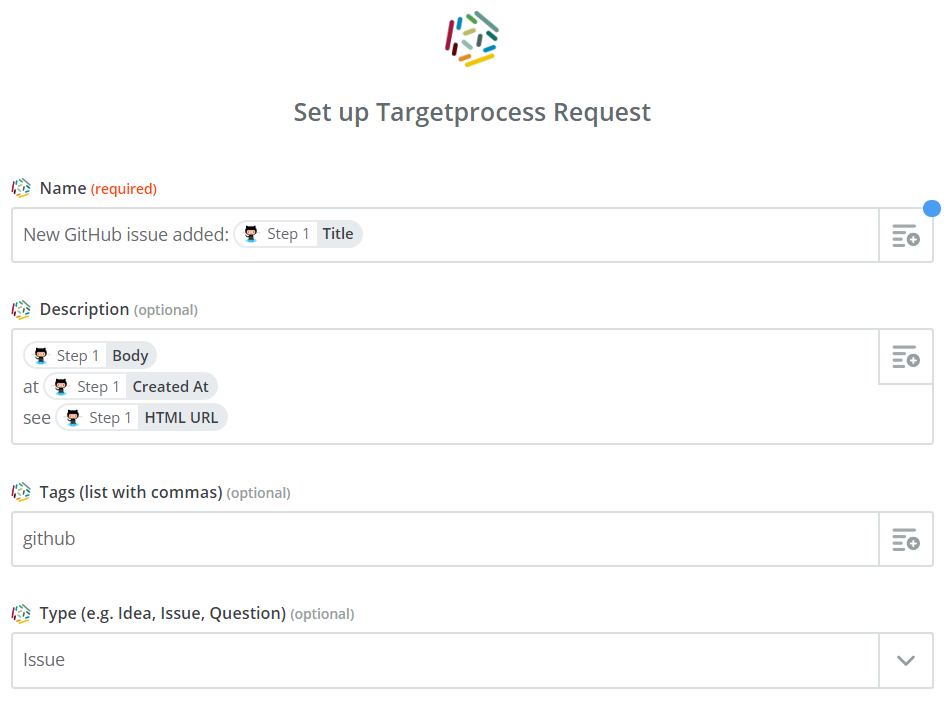Getting started
What is Zapier?
Zapier is a third-party service that allows Targetprocess to connect to many tools. It acts as a mediator between the tools communicating via API. This provides new possibilities for automating the routine or getting your systems synchronized.
Free plan of Zapier has some limitations
Zapier uses a pricing model based on the count of transactions. There is a free plan, but it has limitations. It's also not possible to build 3+ step Zaps on free plan.
Learn more at https://zapier.com/help/plans-pricing/
The integration works as a “trigger” only for new events, it won’t import existing items from the systems you are connecting.
In a nutshell, the integration is based on two main elements: trigger (when this happens) and action (then do this):

Youc can find a list of supported triggers and actions for Targetprocess at Supported Triggers and Actions
Creating a zap with Targetprocess: choose a trigger
Let’s create a new integration (zap) between Github and Targetprocess, so that Github Issues trigger new requests in Targetprocess.
Our trigger App is GitHub:

We're interested in New Issues:

To continue you'll be asked to connect your GitHub account to Zapier. Once it's connected, you can choose a repository and test this step.
Creating a zap with Targetprocess: choose an action
Now we're ready to select an action. Our Action App is Targetprocess, with 'Create Request' action.


Now you'll need to connect your Targetprocess account to Zapier. You can use an existing account, or create a new connection. In the latter case, you’ll see this screen:

For Zaps we recommend using the token of the System User. It can be generated by opening the following URL: https://your-targetprocess-address/api/v1/Authentication?login=System

Here everything inside of the quotations marks (including the final two ==) is the token.
Copy the token value without quotes, paste it into the authentication field and click “Continue”. Zapier will automatically test if your authentication token is good, and you'll be allowed to continue setting up your Zap.
Now you need to match the trigger and the action. Here you decide which of the trigger’s fields you need and what properties of the action they will affect. Certainly, the fields here vary depending on the application and action:

Now please test the zap, name it, turn it on and enjoy!
Updated over 5 years ago
